Magnetometry
Among the most sensitive methods of measuring magnetic fields, atomic magnetometry is based on the interactions of resonant light with an atomic sample, typically a thermal vapour. Recent developments in this research have led to improvements in the performance of atomic magnetometers. The availability of advanced light sources, light detectors, fiber-coupled devices etc. made atomic magnetometers flexible, versatile and relatively cheap, and suited to compete with SQUIDs that use another working principle and represent the current state-of-the-art magnetic sensors. Compared to SQUIDs, atomic magnetometers present the advantage of not requiring bulky cryogenic apparatuses.
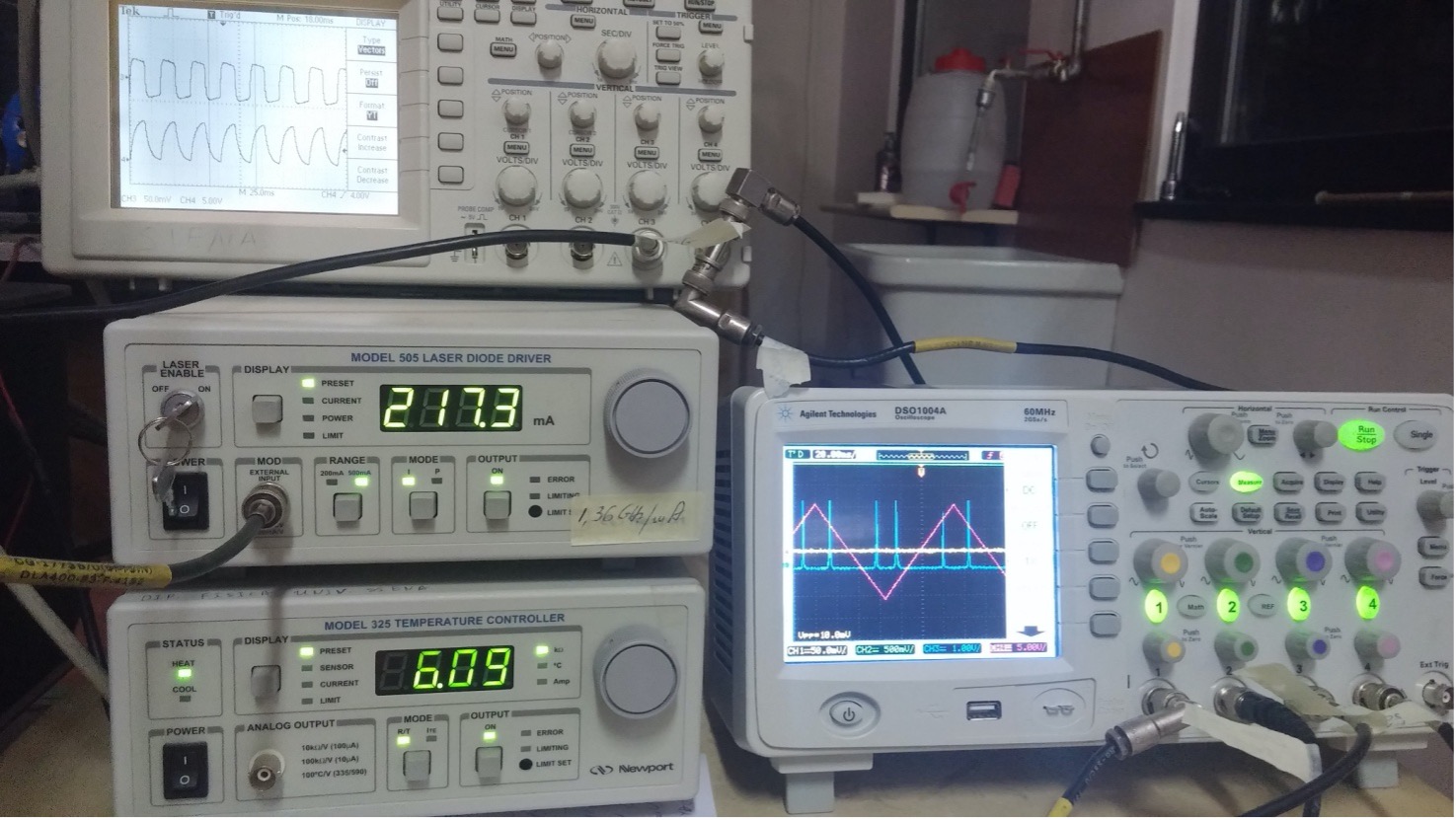
Laser control and other instrumentation working for an optical-atomic magnetometer setup in our laboratory.
Atomic magnetometers are currently used worldwide to detect biomagnetic fields, to visualize magnetically marked materials (including biological tissues), to record NMR and MRI signals in unconventional (vanishing fields) conditions. They are also emplyed in inertial rotation sensing, in magnetic microscopy, in detecting magneto-nano-particles, in testing fundamental symmetries.
There exists several families and arrangements of atomic magnetometers. The devices developed in our lab uses a light-modulated optical pumping (in the so-called Bell&Bloom configuration) and a dual-cell, dual-color setup. The dual-cell enables magnetic disturbance rejection by means of differential measurement. The dual-color arrangement permits to filter out the pumping radiation (D1 Cs line) while polarimetrically analyzing the probe one (tuned to the D2 Cs line).
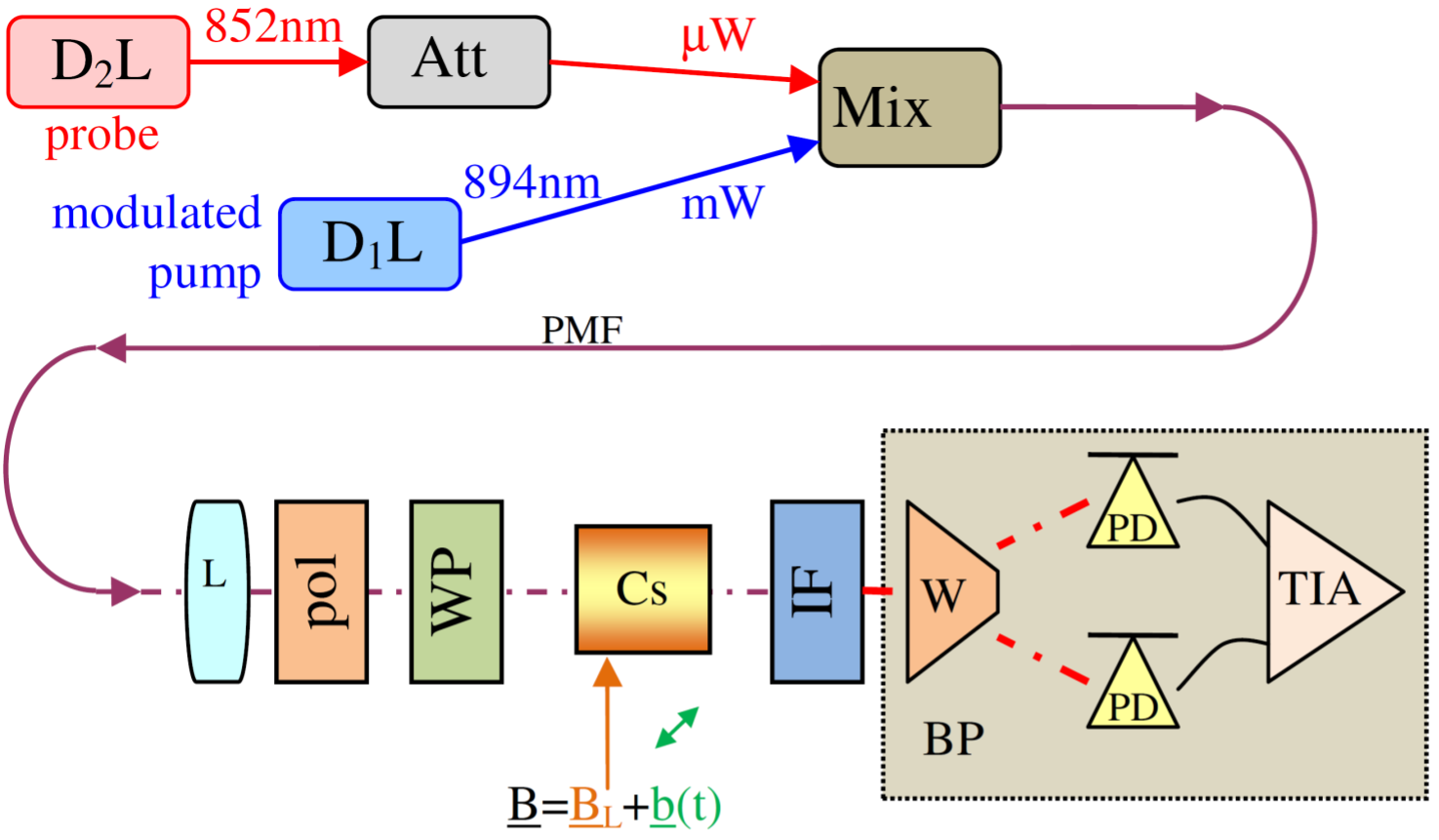
Schematic of a Bell and Bloom set-up.
Our research aims to develop the magnetometer and to improve and characterize its performance. At the same time we consider the application of atomic magnetometry in challenging measurements, such as in magnetocardiography, in ultra-low-field NMR and MRI. Our efforts aim to make the system work in an unshielded environment, and to this end we perfected active field stabilization methods, and peculiar (self-optimized) differential detection schemes.
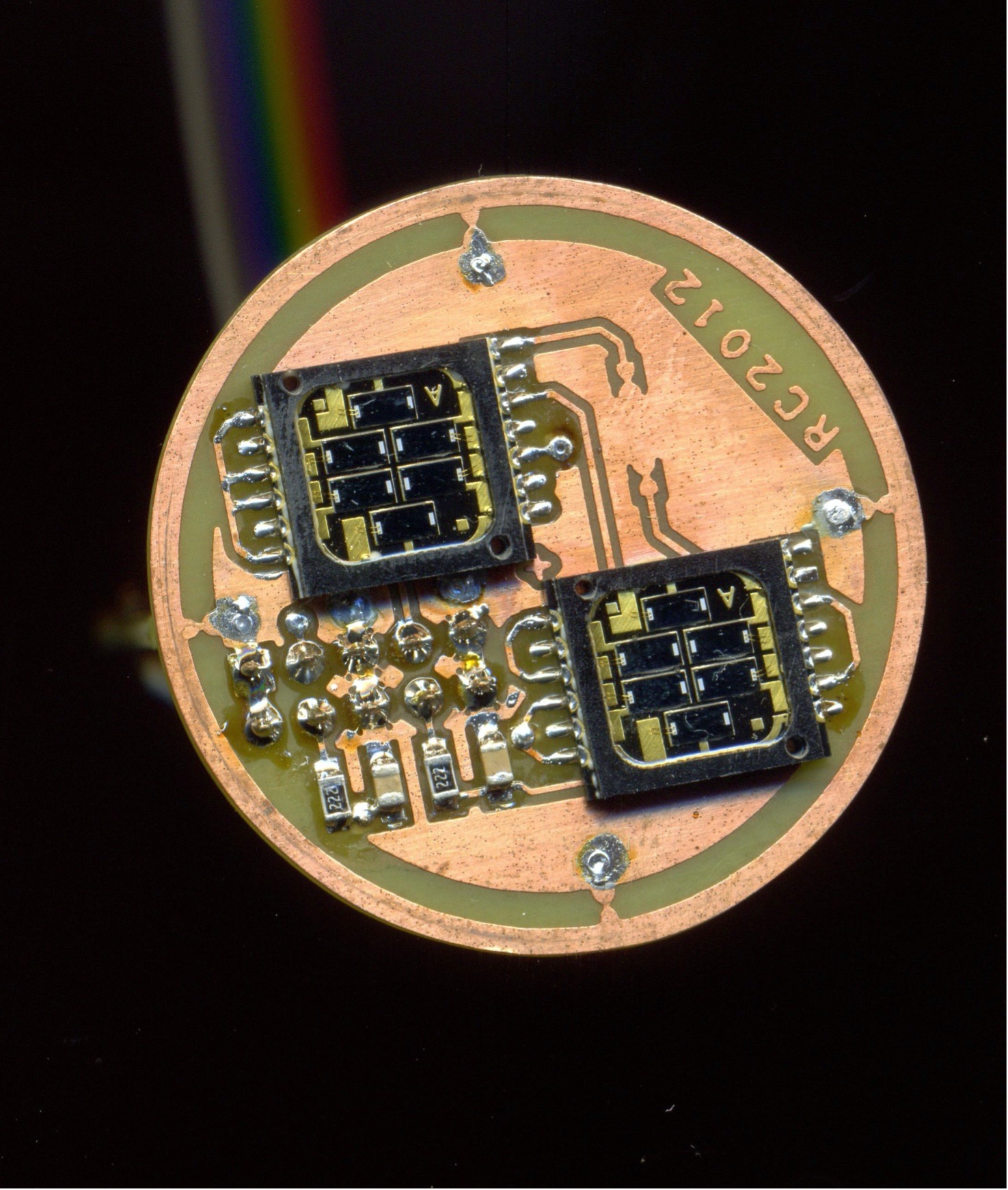
Close up image of a ultra-low-noise multi-channel photodetector built for polarimetric measurements used in the magnetometric sensor
We are also interested in studying and applying peculiar phenomena that occur when the atomic sensor is merged in a magnetic field that has a fast time-dependence. In particular, we developed new schemes for a phenomenon known as "magnetic-dressing". The magnetic dressing led us to develop original, complex field configurations, as well as to demonstrate promising applications, e.g. in ULF-MRI and in MIT (magnetic induction tomography).
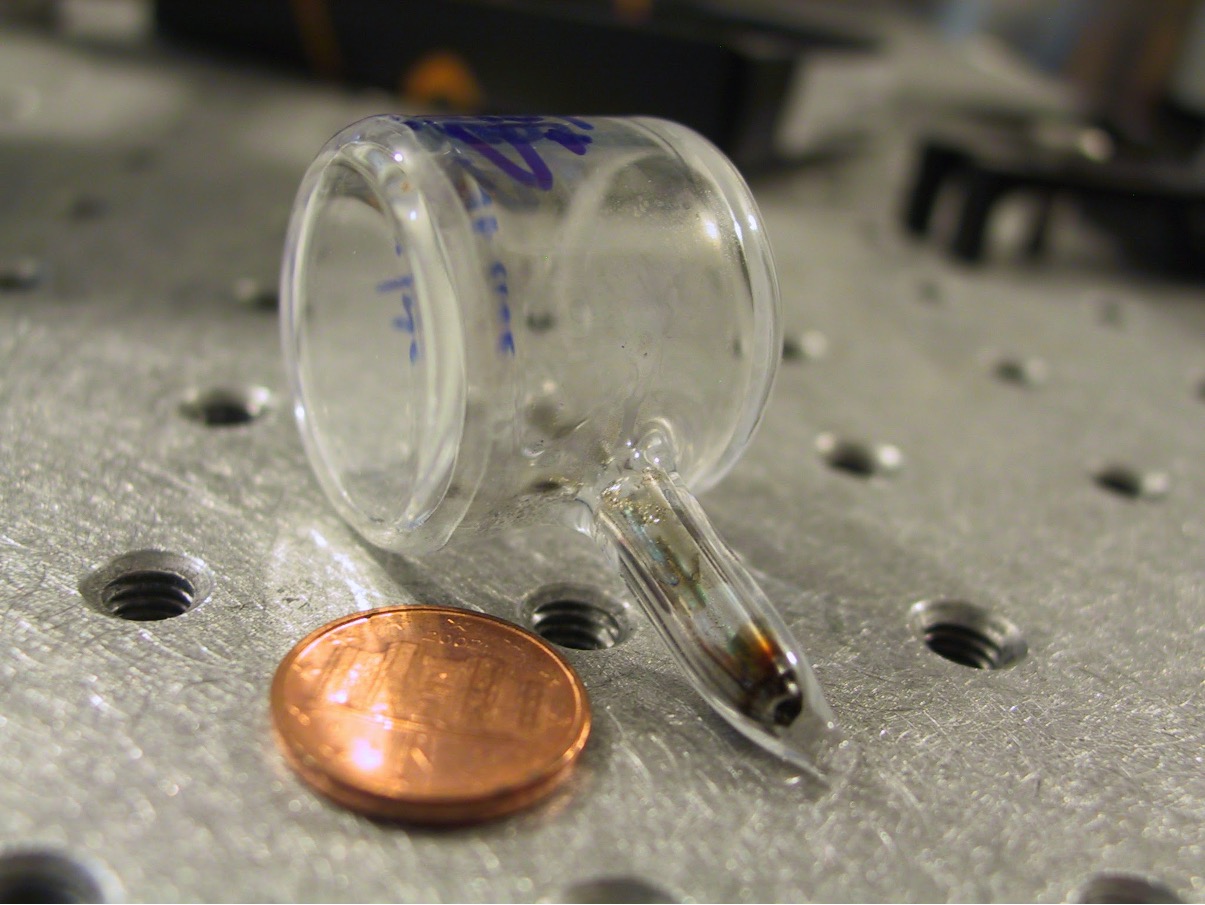
The core of the magnetometer is an atomic sample (Cs vapour) contained in a small-size sealed Pyrex cell
In our lab we also use alternative (cheaper, simpler, more compact, less performant) magnetometric devices in view of different applications. In particular we are developing instrumentation based on multiple sensors arranged in array, to localize and characterize small-size magnetic sources. This research recently led us to build an innovative eye-tracker that enables us to simultaneously record eye and head rotations, a set-up with important implications for medical diagnostics.
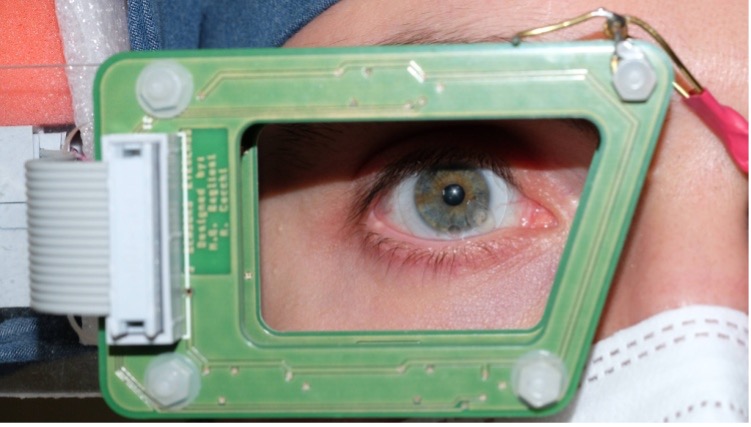
An array of solid-state magnetometers enables the localization of a magnet embedded in a contact-lens, and hence to track the eye-motion with high speed and accuracy
Another activity of our group concerns the study of magnetometric and (laser)spectroscopic tools to develop plasma diagnosticsfor aerospace applications.
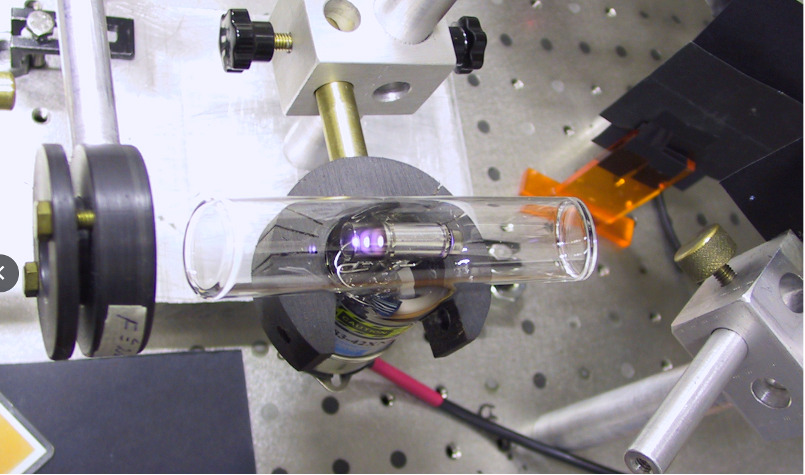
A hollow-cathode Xe lamp used for calibration of laser sources used in plasma diagnostics for aerospace application